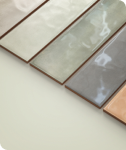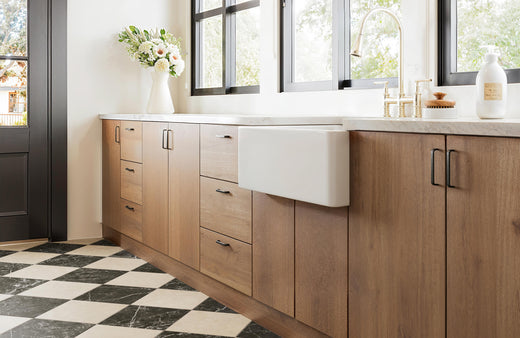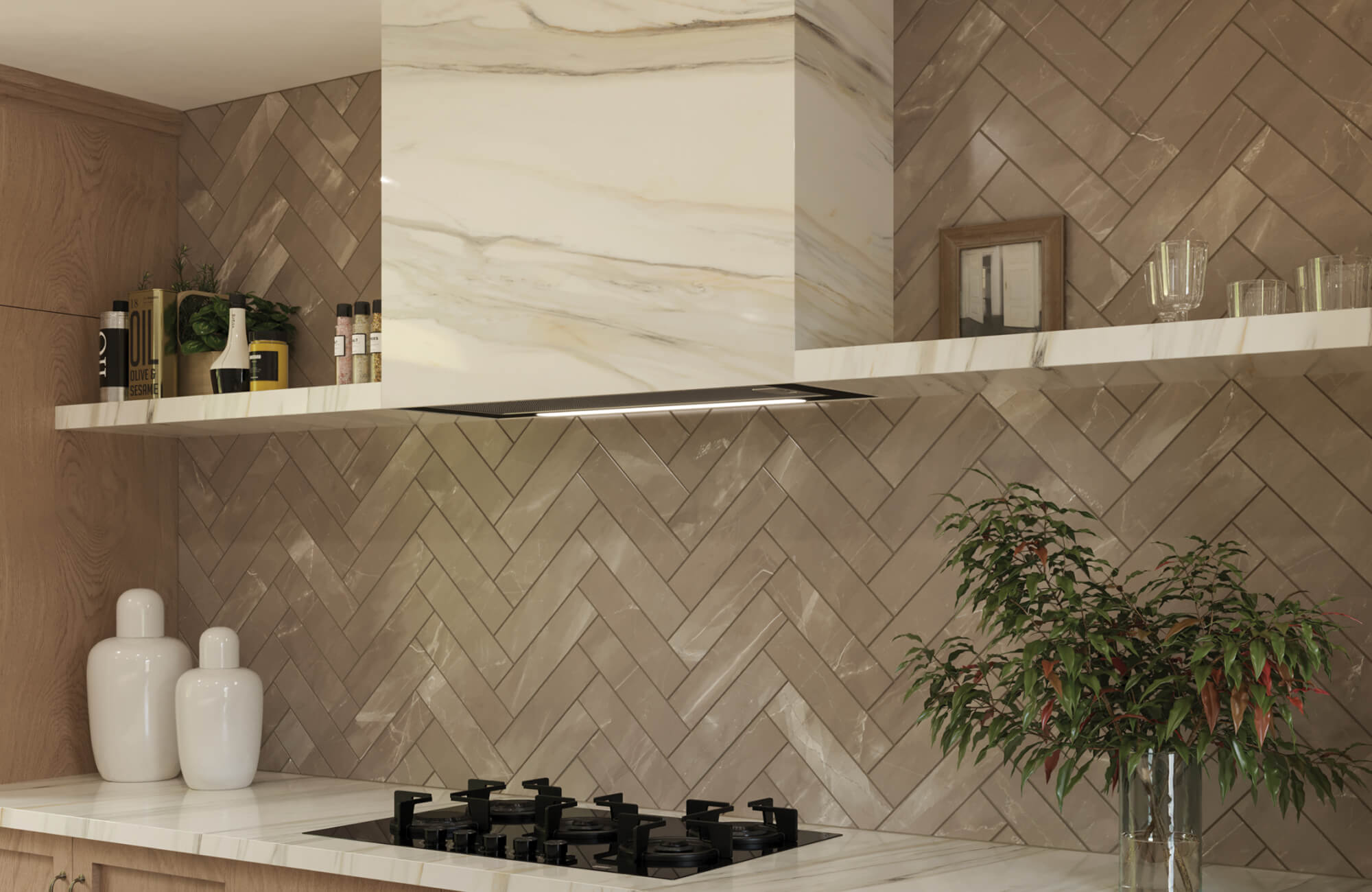Checkered floors have long held a special place in kitchen design, evoking a timeless charm that transcends fleeting trends. This classic pattern, with its simple yet striking visual impact, has captivated homeowners and designers for centuries. The reasons behind this enduring popularity are multifaceted, intertwining historical significance with practical considerations and a timeless aesthetic appeal. From their origins in ancient civilizations to their modern-day resurgence, checkered floors have evolved while maintaining their distinctive character. This article explores the various facets of this enduring design choice, delving into its historical roots, practical advantages, diverse stylistic interpretations, and the enduring allure that continues to make checkered floors a beloved feature in kitchens worldwide.

The Timeless Classic of Checkered Floors
Checkered floors have been celebrated for centuries as a design choice that seamlessly blends tradition with modern appeal. Their iconic pattern exudes both elegance and versatility, making them a popular option for diverse spaces and styles. More than just a decorative element, checkered floors tell a story of enduring charm and cultural adaptability. This pattern has stood the test of time, proving its relevance in both classic and contemporary design.
Beyond their aesthetic appeal, the iconic black-and-white or multi-colored tiles have a functional role, creating spaces that feel vibrant and dynamic. To fully appreciate the relevance of checkered floors today, it’s important to explore their origins, psychological impact, and the various cultural styles they have influenced.
The Roots of Checkered Floors
The history of checkered floors stretches back centuries, with evidence of their use in ancient civilizations. Roman mosaics often incorporated geometric patterns, including checkered designs, to enhance the elegance of their public and private spaces. These patterns symbolized order and symmetry, reflecting the Roman fascination with balance in architecture.
In medieval Europe, checkered floors became a common feature in monasteries, castles, and other significant buildings. Crafted from durable materials like terracotta and stone, these floors not only offered practical durability but also conveyed a sense of grandeur and authority. During the Renaissance, the revival of classical aesthetics led to the resurgence of checkered floors in Italian villas and palazzos. Their symmetrical designs mirrored the artistic and architectural innovations of the time.
Checkered Floors Across Cultures and Styles
From historical roots to modern contexts, checkered floors have transcended geographical boundaries and cultural contexts, adapting to a wide array of architectural styles. In Spanish colonial architecture, for instance, checkered tiles reflect Moorish design influences. These tiles were often paired with vibrant colors to create interiors that balanced energy and tradition.
In modern kitchens, checkered floors have found expression in materials such as porcelain and vinyl. This versatility allows homeowners to adapt the classic pattern to different styles, from rustic farmhouses to sleek, contemporary interiors. Each cultural interpretation reflects a unique aesthetic, yet all celebrate the enduring allure of the checkered design.
The Psychology of Checkered Floors
Checkered floors are more than just a visual feature—they exert a subtle yet powerful psychological influence. The alternating squares create a dynamic rhythm that makes spaces feel larger and more expansive, an effect particularly beneficial in smaller kitchens. The interplay of light and shadow enhances this optical illusion, lending a sense of openness to compact areas.
Moreover, the bold contrast of checkered patterns injects energy and vitality into a room. Kitchens are often the heart of a home, and this dynamic environment can enhance productivity and creativity during culinary activities. The vibrant visual impact of checkered floors contributes to their timeless appeal, making them a favored choice for homeowners seeking both practicality and style.
Practicality Meets Aesthetics
While checkered floors are undeniably stylish, their popularity extends beyond aesthetics. This design choice also offers practical advantages, such as masking imperfections, ensuring durability, and creating clearly defined zones within a kitchen.
Camouflaging Dirt and Spills
One of the practical advantages of checkered floors is their ability to mask dirt and spills, making them an ideal choice for busy areas like kitchens. The alternating squares of color create a visual pattern that can effectively camouflage minor imperfections, making it easier to maintain a clean and tidy appearance even in busy households.
Durability and Maintenance
Checkered floors are renowned for their durability and ease of maintenance. The tiles used in these floors are often made from high-quality materials, such as porcelain or natural stone, which are resistant to wear and tear, scratches, and stains. This durability ensures that checkered floors can withstand the rigors of daily use, maintaining their appearance for years to come.
In addition to their durability, checkered floors are relatively easy to clean. The grout lines between the tiles can be cleaned with a simple solution of water and mild detergent, while the tiles themselves can be mopped or swept. For best results, it is advisable to follow the manufacturer’s recommendations for cleaning and maintenance, as specific materials may have unique requirements. This low-maintenance nature makes checkered floors a practical choice for busy households.
Defining Zones
Checkered floors can effectively define different zones within a kitchen, such as cooking, dining, and preparation areas, creating both visual interest and functional separation. Designers often achieve this by varying the color, size, or pattern of tiles in each zone. For instance, darker tones like the Leona 12x12 Checkerboard Matte Porcelain Tile in Marfil and Nero Marquina, as shown in the photo above, can anchor the cooking area, providing a bold and grounded look, while lighter options such as the Leona 24x24 Checkerboard Matte Porcelain Tile in Calacatta and Amani Grey add an airy and refined touch to the dining space. This strategic use of tile variations enhances the kitchen's overall aesthetics and practicality, delivering a cohesive yet distinct design.

Playing with Patterns
Checkered floors offer endless possibilities for creativity. From color combinations to tile sizes and unconventional layouts, homeowners can customize their floors to suit their personal style.
The Mood-Setting Power of Color Combinations
Classic black and white is a timeless choice for checkered floors, exuding elegance and sophistication. The high contrast between the two colors creates a strong visual impact, making it a popular choice for both traditional and contemporary kitchens. However, the other color combinations for a checkered floor can significantly impact the mood of a kitchen.
For a more playful and energetic atmosphere, consider using brighter colors such as red and white or blue and white. Red and white bring vibrancy and excitement, often associated with traditional Spanish or Mexican tilework, evoking warmth and hospitality. In contrast, blue and white create a serene, coastal-inspired ambiance, perfect for kitchens designed to feel calm and relaxing.
Moreover, adventurous homeowners can explore unconventional pairings like green and yellow, gray and purple, or orange and brown. These unexpected combinations add personality and individuality to the space, lending a contemporary flair to the classic checkered design.
The Impact of Tile Size and Pattern
The size and arrangement of tiles can dramatically influence the visual perception of a room. Large tiles create a sense of spaciousness, while smaller tiles add texture and detail. The pattern of the tiles can also affect the perceived size and shape of the room. For instance, a diagonal pattern can make a room appear larger, while a horizontal or vertical pattern can elongate or widen a space. Designers can strategically use these effects to enhance the room's architecture.
Exploring Alternative Color Combinations
While traditional checkered patterns are iconic, variations such as alternating shades of the same color or incorporating geometric shapes offer modern interpretations. These alternatives allow homeowners to experiment with their space while maintaining the core essence of the checkered design.

Design Inspiration with Checkered Floors
There are various ways to incorporate checkered floors into your kitchen design, from modern interpretations to vintage-inspired styles.
Modern Interpretations
Checkered floors can effortlessly transition from classic to contemporary. Modern kitchens often incorporate minimalist designs with clean lines and neutral color palettes. Checkered floors can add a touch of visual interest and personality to these spaces. For instance, a black and white checkered floor can complement a sleek, monochromatic kitchen, while a more vibrant color combination, such as blue and white, can inject a playful energy into the space.
Vintage Vibes
For those who appreciate vintage aesthetics, checkered floors can evoke a sense of nostalgia and charm. A black and white checkered floor can instantly transport a kitchen to a bygone era, reminiscent of classic diners and 1950s kitchens. Pair this timeless pattern with vintage-inspired appliances, retro furniture, and warm lighting to create a truly authentic look.
Eclectic Style Mix
Checkered floors are a perfect choice for homeowners who embrace eclectic design, blending diverse elements to create a unique and personalized kitchen. By combining checkered patterns with bold wall colors, textured backsplashes, or mismatched furniture, you can achieve a one-of-a-kind space that reflects individuality. For instance, pairing a classic black-and-white floor with open shelving featuring colorful dishware or unique vintage finds creates a dynamic and eye-catching aesthetic.

Making a Statement with Checkered Floors
Checkered floors are more than just a functional flooring option; they are a design statement that can elevate a kitchen's aesthetic appeal.
Expressing Personal Style
Checkered floors offer a unique opportunity to express personal style and individuality within a kitchen. Selecting specific color combinations, tile sizes, and patterns, homeowners can create a space that reflects their unique tastes and preferences. A bold, contrasting color scheme can evoke a sense of drama and excitement, while a more subdued palette can create a serene and sophisticated atmosphere.
Creating a Focal Point
Strategically placed checkered floors can serve as a striking focal point within a kitchen. By using a contrasting color or pattern, designers can draw the eye to a specific area of the room. For instance, a checkered floor can be used to define an island or dining nook, adding visual interest and emphasizing the functionality of the space. Additionally, a checkered floor can be used to create a sense of depth and dimension, making a small kitchen appear larger and more inviting.
For those looking to experiment with layout and design options, the AR tool from Edward Martin provides an innovative way to visualize checkered floor designs in your kitchen. This interactive feature helps ensure your chosen pattern and color scheme align perfectly with your vision, offering confidence in your final selection.
The Lasting Appeal of Checkered Floors
The timeless quality of checkered floors has solidified its place as a beloved feature in kitchen design, effortlessly adapting to both traditional and modern aesthetics. Unlike fleeting trends, this classic pattern has remained relevant across generations, offering a unique blend of elegance and versatility. Whether paired with rustic farmhouse elements or sleek contemporary designs, checkered floors continue to captivate homeowners and designers alike with their ability to blend aesthetics and functionality seamlessly.
For those considering incorporating checkered floors into their kitchen, consulting with a design professional can provide valuable insights into color schemes, tile materials, and layout options that best suit your space. Personalized guidance ensures the design aligns with your vision and enhances the overall appeal of your kitchen. With expert advice, homeowners can confidently bring their ideas to life, creating a space that harmonizes timeless charm with modern practicality.








